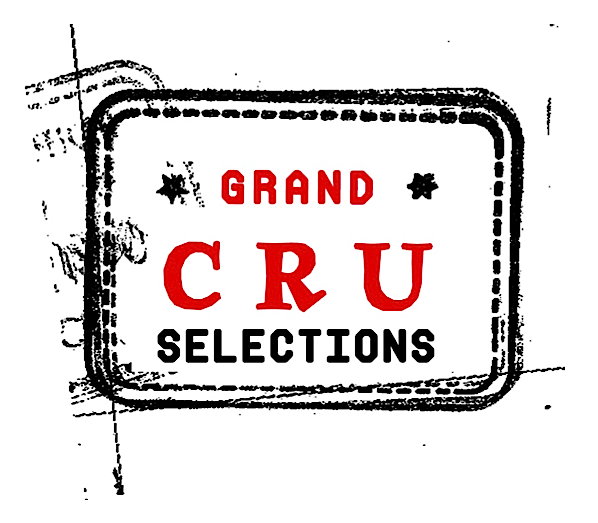Mitja Sirk
Cormòns, Friuli, Italy
Mitja Sirk
The Sirk family has long been a cherished part of Grand Cru Selections, as the founders and guardians of La Subida—one of the most authentic and magical places in Friuli, and indeed all of Italy. Rooted in the traditions of legendary Friulian hospitality, Mitja Sirk—celebrated as one of Italy’s most admired sommeliers—first tried his hand at winemaking years ago, inspired and encouraged by Josko Gravner. What began as a backyard experiment has since evolved into a focused, deeply personal project: a quest to capture the true character of Friuli and, above all, the friulano grape.
Mitja works exclusively with friulano, seeking out old vines, traditional trellising, clean farming, and the exceptional ponca soils that define the region. The result is a project that bridges Friuli’s rich past with its immense future potential. His three cuvées—each a testament to this vision—will soon make their nationwide debut with Grand Cru Selections.
-
Mitja Sirk likes to say he knew he wanted to be a winemaker at just 11 years old. That was the year he began spending time in the cellar of family friend Josko Gravner, who would later gift him an amphora and some grapes—officially (and perhaps mischievously) ushering him into the winemaking world. After plenty of early experiments with orange wine, Mitja shifted course, enrolling in a high school program for viticulture and enology.
Meanwhile, his true education unfolded at La Subida, the Sirk family’s renowned agriturismo and Michelin-starred restaurant. As the house sommelier, Mitja opened bottles from one of Italy’s great cellars night after night, gaining an intimate perspective on the world’s benchmark wine regions—beginning with his own backyard. He also apprenticed widely: Isole e Olena in 2011, Dujac in 2013, Conterno in 2014, and Roulot in 2018. Each experience, Mitja says, reinforced a guiding principle: “A smart and curious wine producer should learn from as many people as possible. Each visit, each dinner, each discussion can open a new way of thinking.”
Mitja’s first harvest came in 2016, and from the start he knew his focus would be singular: tocai friulano. His debut bottling, Mitja Bianco, offered a fresh, stainless-steel expression from vineyards around his hometown of Cormòns. Since then, he has expanded into two single-vineyard cuvées—Ca’ Savorgnan (xxxx) and Meden (xxxx)—each a deeper exploration of friulano’s voice in Friuli’s ponca soils.
-
Cormons is just a mile from the Slovenian border, in the region of eastern Friuli referrd to as Collio. it is a place defined by confluences - midway between the Alps and the Adriatic Sea, where the Mediterranean climate is undeniable, but met with Alpine cold and wetness in the winter, which collide in ideal conditions for the thin-skinned but early-ripening friulano. Soils are the traditional ponca - a series of compressed stones made of hard, compacted sandstone and marl - that bring pronounced texture, concentration and extract to friulano given that the friable stones mix well with subsoils and clay to create an ideal growing environment.
-
Despite his humble beginnings with Gravner, Mitja wants nothing to do with skin contact anymore! His style lends on precision, aiming to be clear and direct. He does gentle pressing, with a cold soak overnight. Temperatures are controlled during fermentation and he has moved away from selected yeasts. Wines are kept on the fine lees and he does light batonnage, with care to avoid reduction (to which friulano is especially prone). He filters once before bottling, and the single-vineyard wines see prolonged time in bottle before release.
-
Alessandro’s winemaking style prefers an increased cold maceration period for more extraction of fruit and flavors, together with simultaneous carbonic maceration that is triggered by the weight of the crushed grapes. This method - aiming for purity and freshness of fruit - has proved one of the biggest stylistic changes to the wines, ever since its inception in 2016. Leading Italian consulting enologist, Carlo Ferrini, has a longstanding collaboration with Riecine.
At harvest, Alessandro cools the grapes and avoids pressing the same day to prevent fermentation from happening too fast; his goal being to stretch out maceration in tank. On the second day of fermentation, skins are completely separated from the juice and the must is cooled. After 12-24 hours, cool juice is pumped over the skins (delestage) then fermentation carries on for the next 14-20 days, after which the wine is left with a submerged cap for 5-25 days (depending on the wine). The overarching goal is to preserve aromas and freshness while allowing increased skin-to-juice contact without using any sulfur and with spontaneous fermentation. Aging times and vessels vary depending on the wine, but 3 months before bottling, all wines are transferred back to open air cement vats to undergo natural tartaric and protein stabilization.
Wines
Bianco di Mitja Vino Bianco Europeo
100% Friulano coming from vineyards on both the Friulian and Slovenian sides of the Collio, called “Plessiva” and “Mernicco”, in addition to purchased fruit from trusted growers with likeminded cultivation methods. On average, vines are 25-35 years in age. Pressed, fermented spontaneously in stainless; aging on fine lees until bottling in May.
Ca’ Savorgnan Collio DOC
100% Friulano from 95 year old vines (with a parcel replanted in 2019) in a single vineyard, “Ca’ Savorgnan” tucked in the hillside of Cormons, a truly “Mediterranean” site that Mitja prefers to farm wild with grasses and spontaneous herbs; spontaneous fermentation and aging in new cask on fine lees until bottling in May; bottle aging for one year. First vintage was 2019.
Meden IGT Venezia Giulia
100% Friulano from 60 year old vines in a single vineyard with incredible ponca lying just under the surface in the hills of Lonzano, the southern part of Dolegna del Collio. The “Meden” vineyard has eastern exposure and is highly influenced by the cooling effects of the mountains, lending to a more delicate, floral wine; spontaneous fermentation and aging in used tonneau on fine lees until bottling in May; bottle aging for one year. First vintage was 2022.

